Gene & Amber in London
4/21/05 - 4/29/05
First Day. Arival at our hotel, The Melbourne House Hotel.
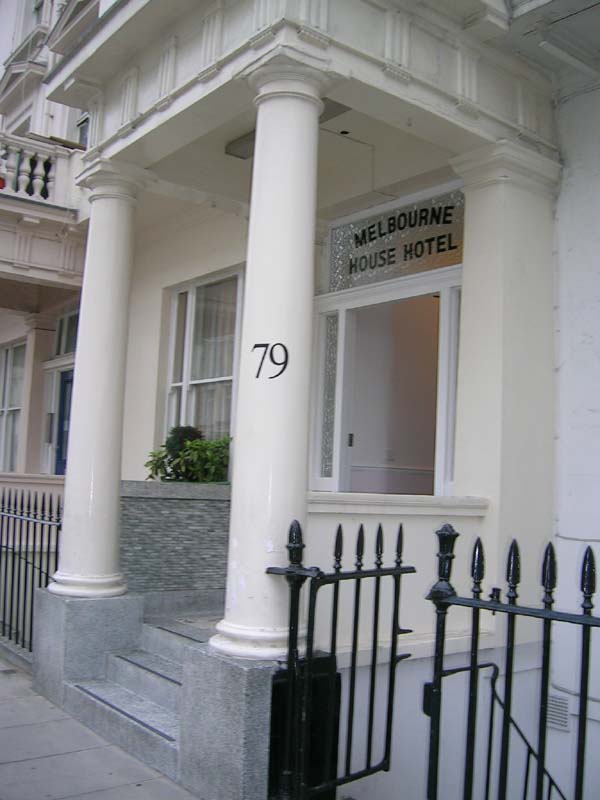
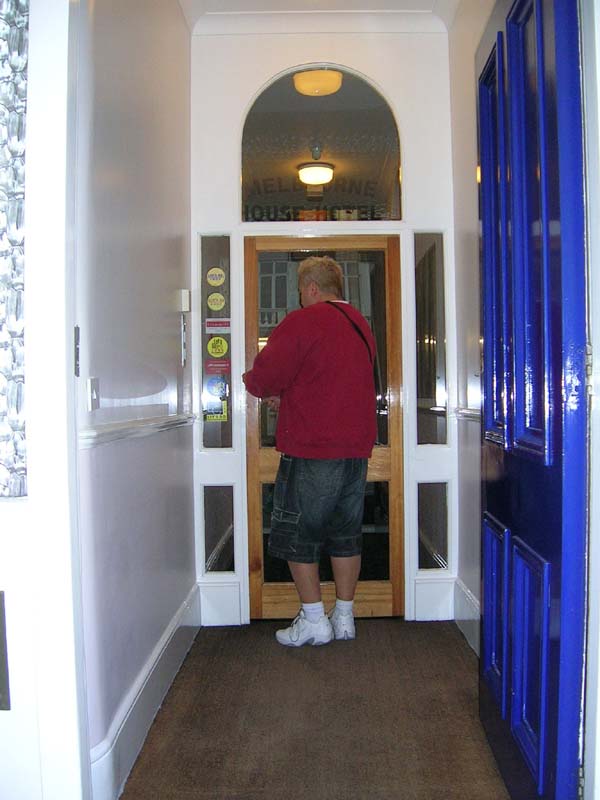
The room was quite small (as in all of London), but we weren't there
very often. We did have our own Shower and Toilet.
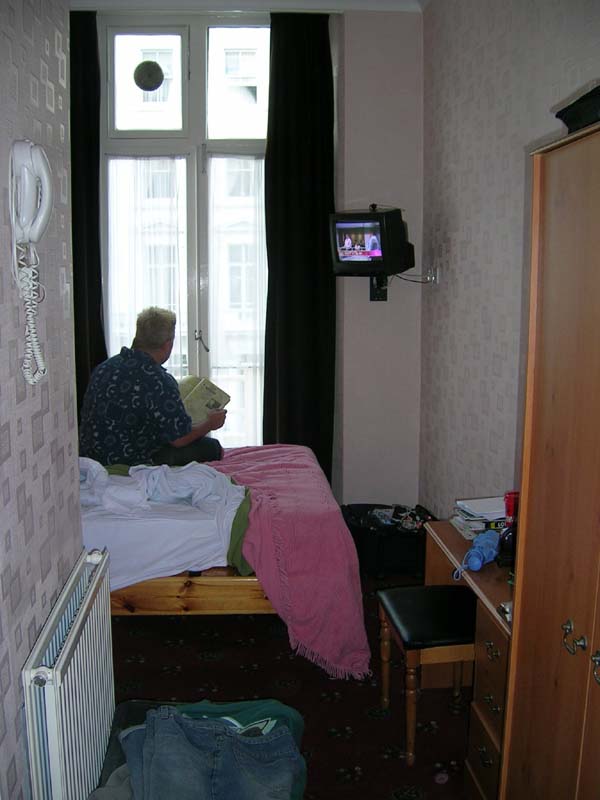
| A picture of me on the river Thames. |
In a double decker bus |
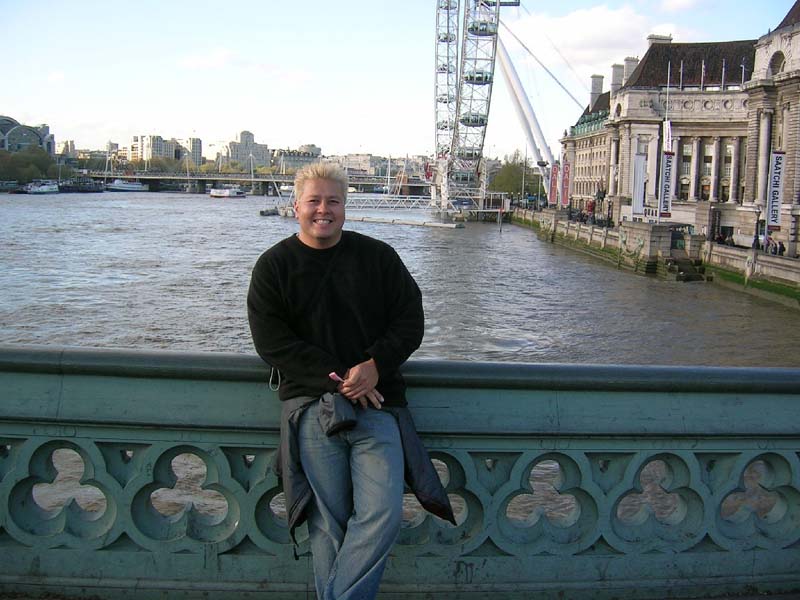 |
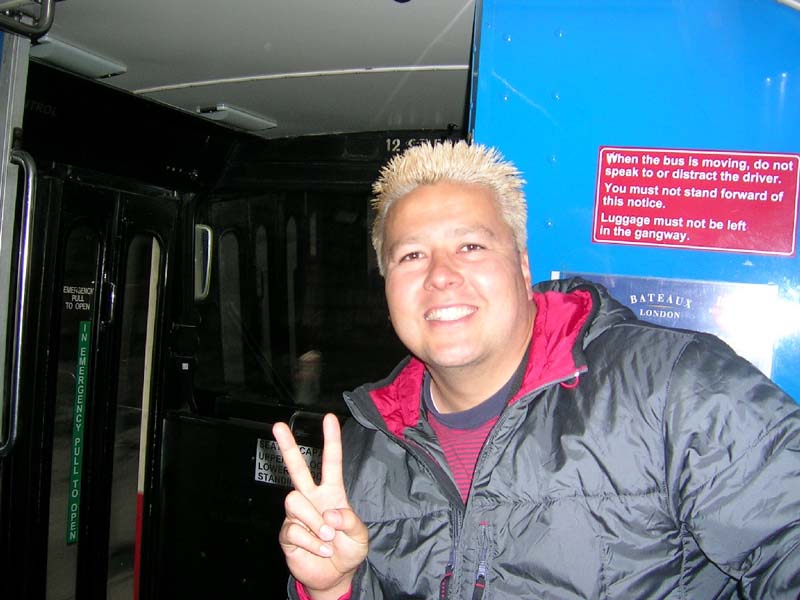 |
A picture of us on the Thames river. We are on
our way to the Prime Meridian in Greenwich. |
Warwick Castle |
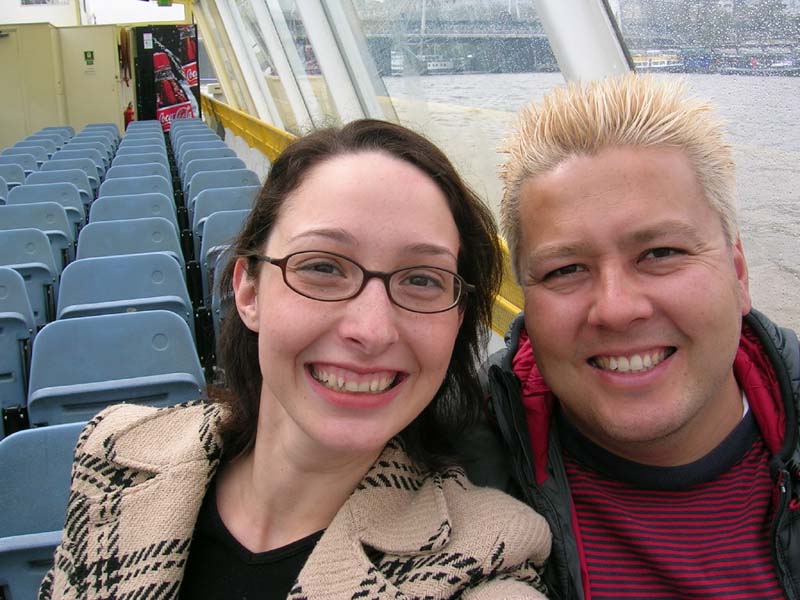 |
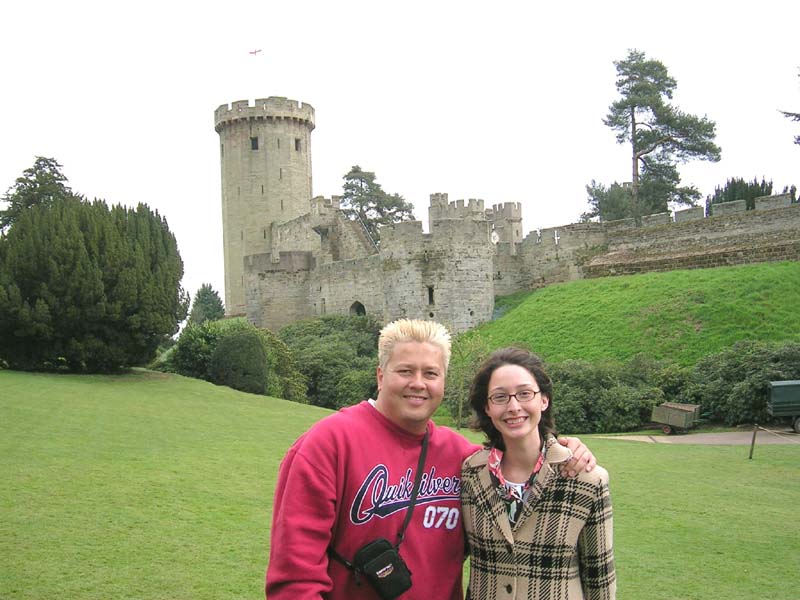 |
The Subway system is great in London. The only time we took a taxi
was to and from the airport
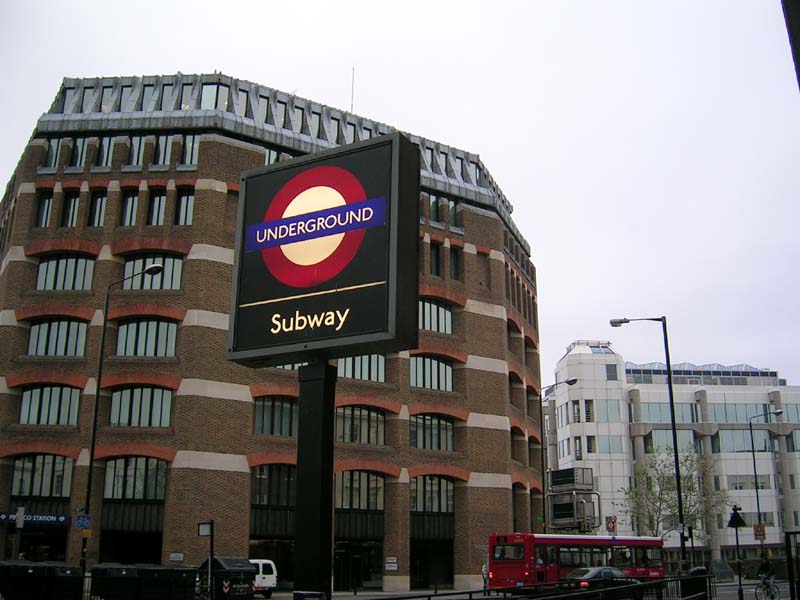
Our shadows
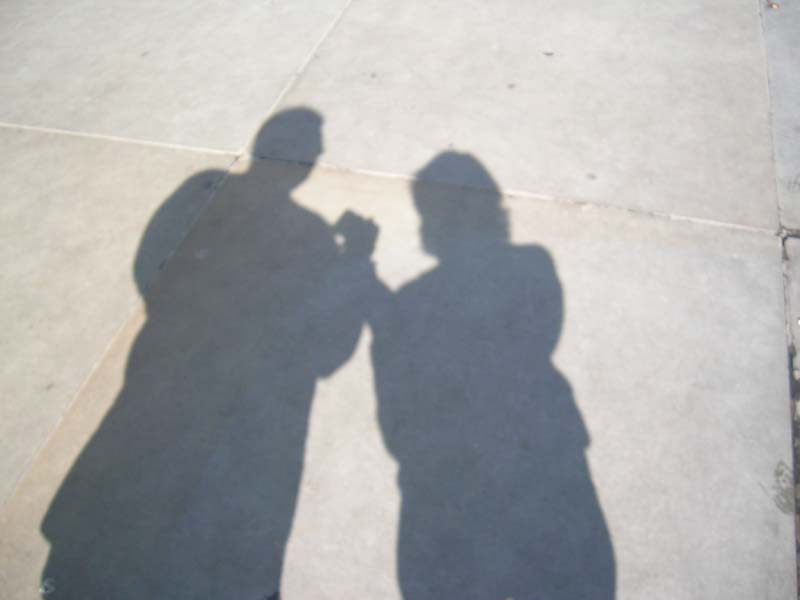
Since we took so many pictures, I got a little lazy with my website
format. I put the rest of our pictures in a "Gallery" below.
Just click any picture and a larger version with more detail will
display. Click  to
return to my London page. to
return to my London page.
I've also included information about places we visited:
Belgrave Square - Fashionable square in Belgravia, named for
the Lord Grosvenor who also had the title of Viscount Belgrave. Formerly
a swamp filled in and developed by Thomas Cubitt in 1825. The Wititterly's
live near here (Nicholas Nickleby).
British Museum
- The collection was originally housed at Montagu House, Bloomsbury
and opened in 1759 although public access was limited. David and Steerforth
visit the Museum there. (David Copperfield) The current neo-classical
building was completed in 1852.
Buckingham Palace
- Built by John Sheffield, 1st duke of Buckingham, in 1703. Purchased
for the royal family in 1761 by George III. It became the official
London residence of the monarchy in 1837 when Queen Victoria moved
there.
Camden Town - Area of northwest London. Dickens' family lived
at 16 Bayham Street here. The Cratchets (A Christmas Carol), the Micawbers
(David Copperfield), and Polly Toodles family (Dombey and Son) also
lived in Camden Town.
Charing Cross - District of London named for the last of the
stone crosses erected by Edward I in 1291 to mark the stops of Queen
Eleanor's funeral procession from Nottinghamshire to Westminster Abbey.
The present monument was erected in 1865. The Pickwickians begin their
travels at the Golden Cross Hotel here (The Pickwick Papers). David
Copperfield stayed at the same hotel referring to it as "a mouldy
sort of establishment in a close neighborhood" (David Copperfield).
Covent Garden - District of London named for a fruit, vegetable
and flower market designed by Inigo Jones in 1632. The Covent Garden
Theatre is located here. David Copperfield bought flowers for Dora
in the market and attends Julius Caesar at the theatre (David Copperfield).
Pip spends the night at Hummums Hotel in Covent Garden when given
a note from Wemmick not to go home (Great Expectations). Arthur Clennam
has lodgings here (Little Dorrit). Job Trotter spends the night in
a vegetable basket in Covent Garden (Pickwick Papers). The Bow Street
Runners, London's first regular detective force, mentioned in Oliver
Twist and Great Expectations, operated from Bow Street near Covent
Garden.
Houses of Parliament - The old Houses of Parliament burned
down in 1834 and were housed in temporary structures until the present
Houses were completed in 1860. Dickens worked as a parliamentary reporter
1831-36.
London Bridge - Until 1750 London Bridge was the only bridge
over the Thames in London. A bridge at this site dates from Roman
times. The first stone London Bridge was built in 1176. This bridge
eventually had houses, shops, and a church built upon it until they
were removed in 1763. In 1831 it was replaced by a granite bridge
designed by John Rennie. The Rennie London Bridge was replaced in
1972 and Rennie's bridge was dismantled and rebuilt in Lake Havasu,
Arizona. One of the arches of the Rennie London Bridge still supports
the southern end of the current London Bridge (photos).
Trying to save Oliver, Nancy meets Rose and Mr. Brownlow on the steps
of London Bridge. She is observed by Noah Claypole which leads to
her murder (Oliver Twist). David Copperfield, like Dickens, liked
to sit on London Bridge and watch the people go by (David Copperfield).
Gabriel Varden, the locksmith, crosses London Bridge to visit Mrs.
Rudge in Southwark (Barnaby Rudge).
Regent's Park - London suburb laid out by John Nash (1752-1835)
in 1811 during the Regency period. George III, incapacitated by mental
illness in 1810, was replaced by his son (called the prince regent),
later George IV. The period between 1810 and 1820, when George III
died, became known as the Regency period. The Zoological Gardens opened
in Regent's Park in 1828. Dickens lived at 3 Hanover Terrace and at
1 Devonshire Terrace (1839-1851) in Regent's Park.
St. Paul's Cathedral - Long the focalpoint of the London skyline,
the present St. Paul's Cathedral, built by Sir Christopher Wren from
1675 to 1711, replaced the old gothic cathedral which burned in the
Great Fire of 1666. St. Paul's is part of the background scenery in
many of Dickens' works. David takes Peggotty to the top of St. Paul's
(David Copperfield).
Westminster Abbey
- The most famous of England's churches. Originally built by Edward
the Confessor in 1050, the abbey was rebuilt in its present Gothic
style starting in 1245. Henry VII added his Chapel shortly before
his death in 1509. England's monarchs since William the Conqueror
in 1066 have been crowned here. Many of England's kings and queens
are buried at Westminster Abbey as are many of its famous citizens
including Chauncer, Newton, and Darwin. Charles Dickens was buried
in Poet's Corner, in the Abbey on June 14, 1870. Pip and Herbert Pocket
attend services in the Abbey (Great Expectations). Mould the undertaker
tells Mrs. Gamp that gold can buy a gentleman a tomb in Westminster
Abbey if he chooses to invest in such a purchase (Martin Chuzzlewit).
The National Gallery
- London houses one of the greatest collections of European painting
in the world. These pictures belong to the public and entrance to
see them is free.
London Underground
|











































































































